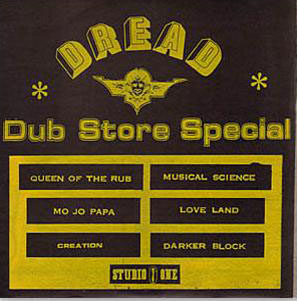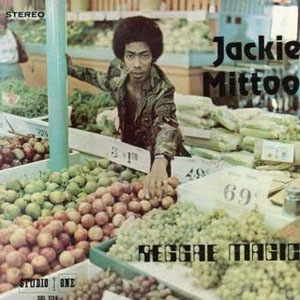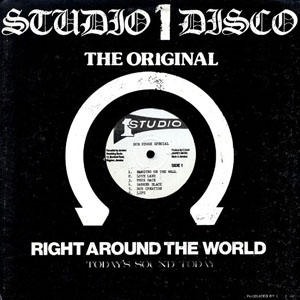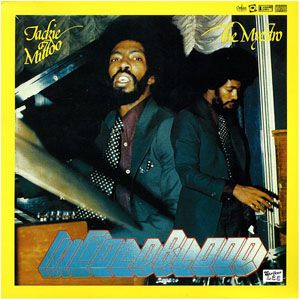Witness my own
Forget gadget

What is a prosodic device?
In 1970, Hannah Weiner exhibited a telegram in Oberlin College’s conceptual art survey Art in the Mind. After the “mail strike,” her letter to Virginian Dwan was delivered to the gallerist (page one and page two). In it Weiner complains that Vito Acconci’s telegram-piece should be exhibited in Language IV along with Walter DeMaria’s telegram, arguing that the medium was immaterial, and that the artwork, in either case, consists in its sphere of reference. So that there could be no redundancy involved. She cites her piece at Oberlin.
But she might have also claimed more significance for the telegram. A primitive speech-to-text technology, it is a phonic ticker, defamiliarizing the otherwise imperceptible but crucial transfiguration that takes place between sound-image and thought. (Ah, that whiff of trauma Saussure inspired.) “STOP” replaces terminal punctuation. Capitals replace the inflections of type case. Exhibiting these features as visual art in a show about language calls notice to them swiftly and unambiguously, as gestures. It might have made an equally effective example of enforced transparency for Ron Silliman’s essay “Disappearance of the Word, Appearance of the World,” an essay that famously alludes to the film subtitle’s accessory function—typos are tolerated, if noticed at all. Noticing this is a threshold experience for those wanting to comprehend Language Writing’s critique of the materiality of the signifier, if not even to come to terms with structuralism itself. Charles Bernstein’s audio recording of his introduction to Close Listening memorably foregrounds the strangeness of text-to-speech technology to inspect the same set of phenomena from within.
Isn’t a telegram a fundamentally prosodic device? Spoken onto paper from a distance in time and space? Bluntly rendering phonemic impulses as graphemes, it precludes the exquisite tone, timbre, meter, etc. of verse while it obviates the objective of prosody. It scans, full stop. That leaves only what linguists call the morpheme, the word’s ideational capacity. “Man” contains one morpheme, and “men” two of them: the idea of man plus plurality. We have a new technical term—skeuomorpheme—thanks to the tendency of digital iconography to resemble analogue technology. We still use “file folders,” but why? Clicking on an icon or a name that signifies an operation only effectively realized in the idea it embodies means we are in a skeuomorphic era. An obsolete device, resembling or referring to its own obsolescence. And by it we mean reference. Skeuomorphic practice in the design of computer interface is consumer-driven, supposedly, and agestural, certainly. I had this in mind when I discussed, last week, the “transvaluative” movement between “banality” and the image of Truth. Transfigurative is more like it. The skeuomorpheme is necessarily iconographic, especially when an alphabet is involved.
In my recent work, I have sought other platforms for writing, other than pages, web pages, traditional books. Opting to call the resultant works artist’s books, I have been investigating the limits of legibility, recursivity, cycles of decay and replenishment—all operative features of subcultures that have used, in recent decades, the 7” vinyl “single” record as a medium: especially independent pop movements linked to political ideology (certain Anglo-American punk and “indie” circuits, Jamaican dub culture, etc.). The thing I have to remind myself is that reading the lines of a novel, like Gertrude Stein’s Making of Americans, or a list, like Tan Lin’s BIB., REV. ED., is just that: linear. Also, angular. As I put it in another commentary, braided. But the record’s spiral scratch (being the title of the first independently released, D.I.Y. single of British Punk, by the Buzzcocks) is what makes it audible, or legible to the tone arm. So misusing the surface of the record by treating it as an image, the braid is merely apparent. A truly braided groove rejoins itself somewhere. It becomes a “lock groove,” over which are lain other sounds, often “scratching” by a hip hop d.j.
Hip hop tropes are rightly sourced to Kool Herc, a Jamaican transplant to The Bronx. In Jamaican dancehall and dub culture, the d.j. is what American hip hop calls the M.C. or “rapper,” the one who “voices” instrumental dub plates. Dub plates are versions of popular songs whose recorded tracks are manipulated through dropouts, phase, and echo effects. Reggae rhythms were actually invented in response to a new machine imported from Florida by Clement Coxsonne Dodd of Studio One, an echo called “Sound Dimension” (the Studio One house band took on the name). So the apparatus was the strange attractor, as it were, of a musical ensemble. The ensemble was the audience, too. In Jamaica, records were the primary means by which music was shared and celebrated; it is a “sound system” (mobile discotheque) culture, not a live music culture. So musicians in an analog recording studio would have to go to the dance to hear how the producer’s remix and d.j.’s “toast” over the record affected the audience. Expanding the radius of meaningful feedback, ensemble playing becomes a densely braided spiral drawing a line through slightly different motives, generations, and means of production and consumption. A band (group of musicians) cannot actually play dub music. The bands (grooves) of influence resemble concentric circles, from one angle, that of production and consumption. These lines can be braided; they interpenetrate.
This last summer, I worked with the visual artist Milad Mozari to realize a set of five “singles.” Singles is a series of 3-D acryllic prints with the dimensions of 45 RPM vinyl records in glossy plastic sleeves. The faux labels feature minimalist couplets printed in reflective opposition. The language lends volume to font and type cases that cite design features peculiar to the golden era of Jamaican dub music. I was looking at the text treatments of these records in my collection.


These designers fearlessly pasted up sleeves that, taken together, appropriate and recombine optimistic, nostalgic, futuristic, commercial, and even asignifying scripts. Dazzling and difficult. For my project, I wanted to translate this paratactic graphic effect to the wax. The language of Singles intrudes or extrudes from the queasy greenish-white “vinyl” itself, and the grooves are replaced by a single, sunken band. An unlimited edition in a series of five, Singles negotiates print culture as skeuomorphic nostalgia for environmental detritus, with the caveat that intellect and sentiment serve as bordering ecosystems for the grand archive that is “the” environment. It is also a critique of contemporary artisinal capitalism. The resurgence of a vinyl reissue (or in Jamaican parlance “revive”) market is one target of this critique. The same I had in mind the previous year, when I made Daughter.
Daughter is a set of offset prints of sumperimposed photo details of preliterate graphemes and early childhood imagery (from sticker- and story-books that reinforce gender codes in palatial yet mundane tableaux). The omission of alphabetic writing is spirited by the Argentinian Asemic writer Mirtha Dermisache, whose “newsletters” and other works of systemic scrawl mimic the rational, modular page forms of mass media. Daughter is a parlor game of throwing voices, yet without a speech act involved. It was first inspired by the notion of “linguistic contagion” (that I explore in PQRS) in my everyday parental dialogues with my daughter, Ruby, whose original artwork is captured (albeit manipulated) in the photographs framed and inserted into plastic sleeves to comprise my very first “single” artist’s book. Printed double-sided so that only certain images of icon and letterform correspond, it was formatted for legibility in that its sphere of reference is intentional and negotiable. It solicits some effort to produce referentiality, and PQRS only differs in that it is a poets theater script that is better produced in the mind’s eye than in a theater. Resistance to repertoire.
These new Singles have one defunct face bored out (which Milad and I called the “fat groove” for shorthand). I wanted the sickly eggshell hue to insinuate functionality without too well resembling it, preempting the desire for its presence and the bemoaning of its absence. I had these short couplets I’d gathered, which seemed to be about obsolescence, the decay of imperial ambitions or the betrayal of aesthetic flights of grandeur: “CLOUD MACHINE / COLOR MUSIC,” “REMORSE / ENSIGN,” “LAND GRAB / TOP COAT” etc. When I began to write them down, I would do so long hand, draw a line underneath, and then draw the second half upside down. It was a little like watching the center sticker of a record spin, in that the lines of the letterforms appeared to curve or balloon a little, as top and sides reversed. That is where it started, with a thickening of the space around which the lines went. The last tracks before the runout we say hug the label. My pen was starting to do this in my hand as I upended my habits of seeing what I set down.
My reaction was a minimally cogent application of Plato to pop. The words “forget gadget” would look great etched into a record. I was sifting through my collection of 45 records, reassessing my devotion to a format or “medium” that had once been the platform of so much critical intervention and radical self-invention. I was moving house, and in packing up that and my library of books, I had put my hand to everything I owned. My copy of Alcheringa number 4, for example, complete with flexi disc. Phaedrus suspects the technique and the apparatus of writing will corrupt rather than aid the memory, the “record.” Of course, pop is now solely on the side of content—pop musicians are content providers, as with the entire creative class. Consumers identify mainly with the device that is nearly instrumental in throwing a horizon around the form of their work. This has an impact on the cultural authority of the artist (and industry). There is no such thing as a best of compilation anymore. You type a keyword into Spotify and it generates a “list” (the worst term for what it generates, but insofar as it plays, that’s what you get).
I had already been thinking about the “contrived élan” of indie vinyl culture when I made Daughter. The thought continued when “FORGET / GADGET” appeared to apply so well to the design strategies of 70s-80s Jamaican dub culture. Marveling at the disharmonic, but somehow perfect, text treatments of the record sleeves, everything came together.


What few people know about me is that I harbor an interest in and respect for liberation theology. This began when I read I, Rigoberta Menchu in college. Ideological repurposing—specifically the politicizing of spiritual doxa—has the potential to dissolve the obviously destructive moral thrust of religion (a term etymologically bound to bondage itself), into an ethical becoming. Somewhere between the events of 9/11/01 and Bush Jr.’s U.S. military invasions of Afghanistan and Iraq, my listening habits suddenly concentrated on ska, dub/rockers and early dancehall. I had been reading Emerson, whom you could not dance to, and I just wasn’t feeling Fugazi anymore. I studied these periods, the artists, the labels, producers, publishing houses and finally, briefly, Rastafarian culture. The latter offered a palliative response to the “crusade” narrative that had come to roost.
Maybe the terrible hostility of that period could be examined in the space of a rhythm or a refrain (“chant down Babylon”). The implosive space of Elder Utah Smith’s “Two Wings” sides echoed in my memory (another college favorite). And the equally American gospel of rock n’ roll has something similar about it. Johnny B. Goode was certainly “unplugged”—i.e. obsolete in what he resembled—as he strummed Chuck Berry’s electric guitar under a tree beside some lonesome, anonymous stretch of a railroad line. Marx’s every assertion followed from the observation that nature is man’s [sic] inorganic body.
Next, I want to consider how the skeuomorphic period and the anthropocene presuppose one another. I have a few ideas how.
Witness